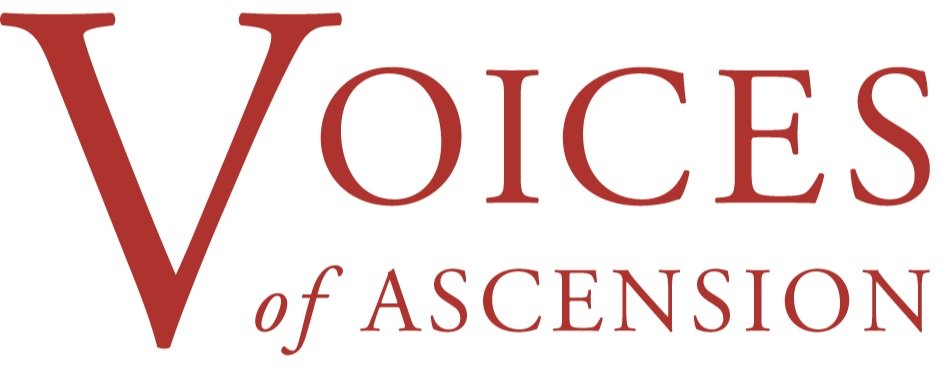Voices of Connection: 12/07 Palestrina: Canite Tuba
For the month of December, Voices’ Artistic Administrator, Wesley Chinn will be curating a selection of Holiday music from recent Candlelight Christmas and Family Holiday Concerts.
For today’s selection, we turn to another setting of a classic Advent text, the second part of which is perhaps best known as the verses from Isaiah that provide the text for the opening tenor aria of Handel’s Messiah (“The crooked shall be made straight and the rough places plain”). The first half of the text, from the Old Testament book of Joel, translates as “Blow the trumpet in Zion,” and indeed we can hear the trumpet call in the clarion call of Palestrina’s opening setting.
Recordings of Palestrina, of course, provided some of the seminal moments in Voices of Ascension’s history (you can hear about some of them in our Music with the Maestro discussion of Beyond Chant), and Maestro Keene shared a rendition of this piece from the Delos recording Prince of Music in an earlier Voices of Connection. This version comes, with video, from a live Candlelight Christmas concert.
Palestrina is famous—amongst musicologists, at any rate!—for supposedly saving choral music in the Catholic church by demonstrating that choral music could be written in such a way that the words could be understood. While the story of him impressing the Pope is probably apocryphal, it’s certainly true that his brand of polyphony does make the text much clearer than that of the previous generation of Renaissance composers. In this setting, first published in 1570, one can hear some of the precursors of the Baroque style. Notice, for instance, how often two or more voice parts enter in rhythmic unison, singing the same words at the same time. Often, this is echoed by another two or three parts in a way that anticipates the polychoral style of early Italian baroque composers such as Gabrieli, until finally all the voices come together for a final jubilant “Alleluia.” Musical eras are often taught as though they are separate, but at the time this piece was published, Gabrieli was a young composer studying with Orlando Lassus, and Monteverdi was five years old, so of course its unsurprising that we can hear in this work the groundwork being laid for the development of the Baroque style of music. – Wesley Chinn
Join us for our 30th Anniversary Season
VIRTUAL EVENTS. REAL INSPIRATION.
GIOVANNI PERLUIGI DA PALESTRINA Canite Tuba
Voices of Ascension
Dennis Keene, Artistic Director
Recorded live at the CANDLELIGHT CHRISTMAS CONCERT
Wednesday, December 17, 2019, The Church of the Ascension, New York City
The singers in this performance are represented by the
American Guild of Musical Artists, AFL-CIO.
